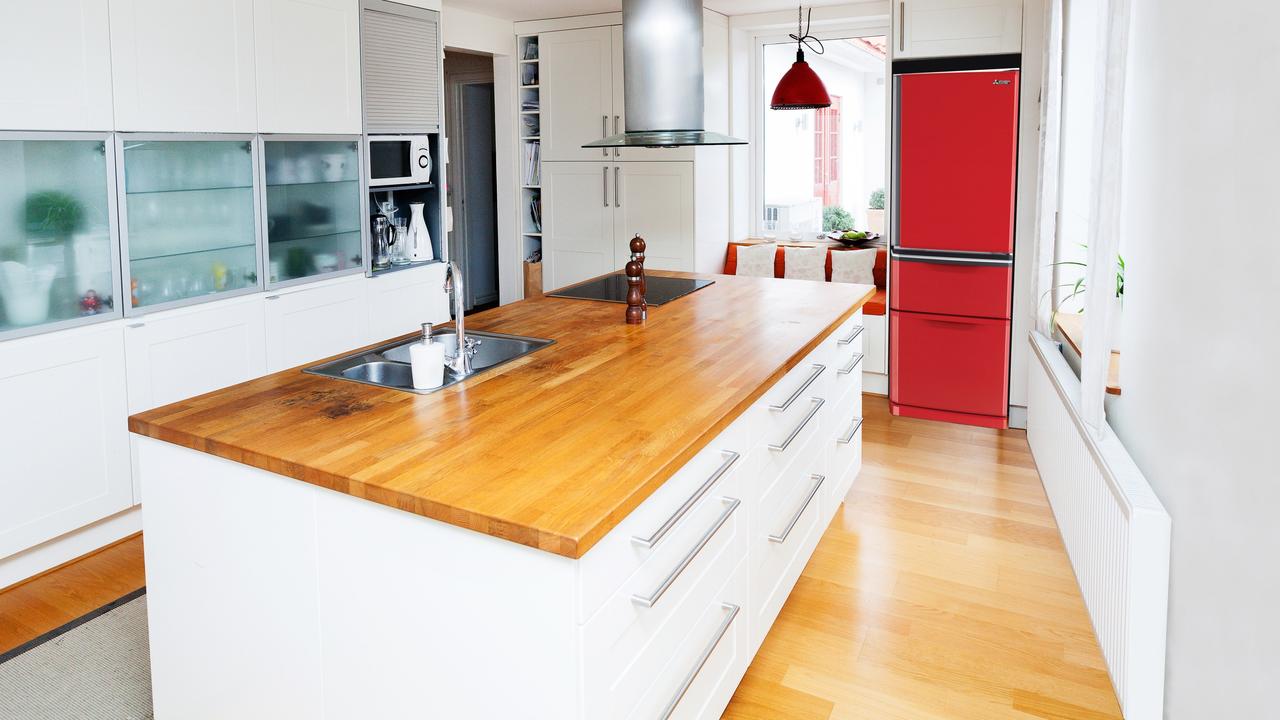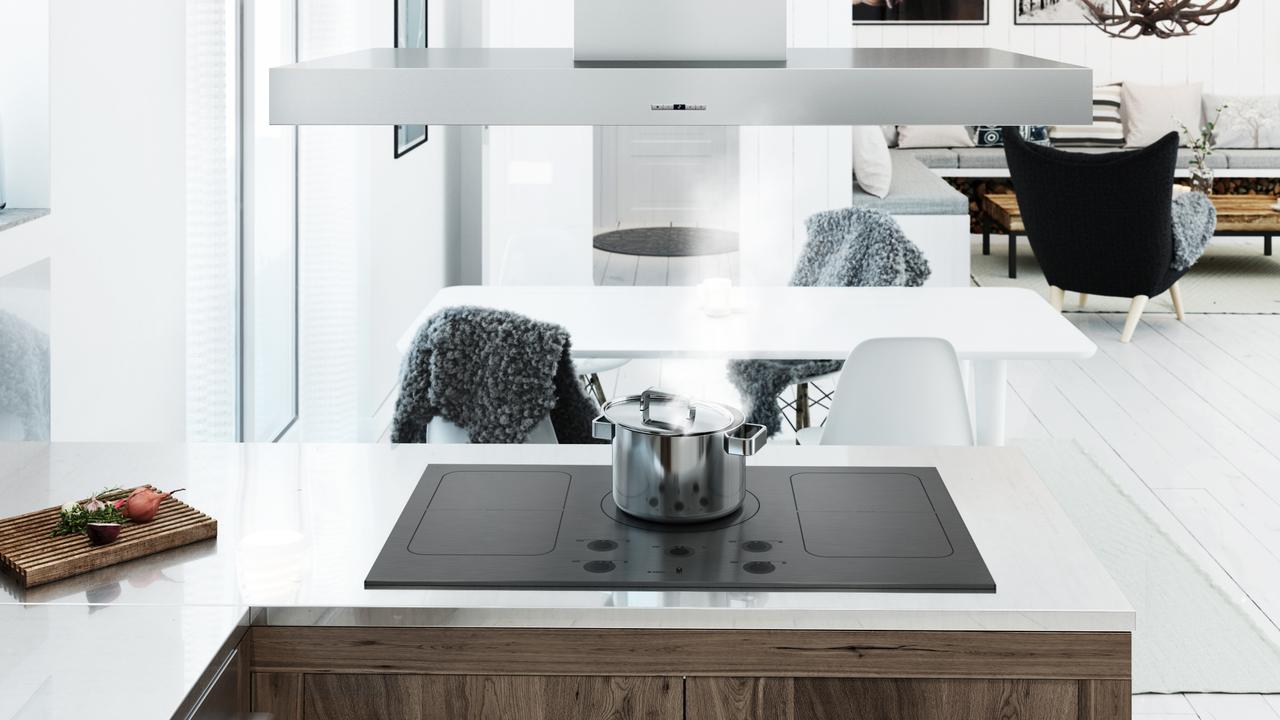Households can save $6000 a year by being more environmentally friendly
Australian households could be saving up to $6000 a year while halving their carbon emissions with just a few changes, new analysis shows.
Australian households could be saving up to $6000 a year while more than halving their carbon emissions by changing a few key things around their home, new analysis shows.
Consultants Ironbark Sustainability have crunched the numbers for news.com.au to give people an idea of what emissions reductions can be achieved in their households.
It showed that doing things like composting, recycling and even changing your diet can make a difference in the amount of emissions you produce, and can also save you money.
Switch to solar — even if you can’t get panels on your home
Not everyone has the right type of home to install solar panels but even signing up to an electricity plan that uses 100 per cent renewable energy will make the most difference to individual emissions.
“(Signing up to a green electricity plan) is as good as getting solar panels as long as the power is 100 per cent renewable,” Ironbark managing director Paul Brown said.
Mr Brown said those living in Victoria, Queensland and NSW in particular would reduce their emissions significantly as these states relied heavily on black and brown coal, which are the most polluting electricity sources and responsible for almost 30 per cent of Australia’s carbon emissions every year.

States like South Australia and Tasmania produce less emissions from electricity because they have higher levels of solar, wind and hydro. People can check emissions being generated in their local council areas by going to Snapshot Climate’s website.
On average, installing solar panels could see a household stop 8.9 tonnes of carbon dioxide equivalent from being released every year, while also saving them $3100 in electricity bills.
Buying an electric car (EV) can boost this saving by another 5 tonnes if the vehicle is run using 100 per cent renewable energy.
Eat less meat and compost your food
If the household also composts, recycles and eats chicken instead of beef (on top of switching to solar and running an EV) it could boost savings to a total of $6120 a year and reduce emissions by a total of 16.6 tonnes a year.
This is a significant saving considering Australia’s latest National Greenhouse Accounts report estimates emissions per capita are 19.4 tonnes per person
While there is generally more than one person living in a household, being able to save 16.6 tonnes of emissions every year would still be significant for most homes.
The per capita figure, which covers the period up to December 2020, is lower than normal as emissions declined during the coronavirus epidemic but the 2019 figure was only a little higher — at 21 tonnes — so saving 16.6 tonnes would still more than halve emissions.
Look for more energy efficiency appliances
A big focus as the world tries to shift to net zero emissions will be replacing white goods such as fridges, washing machines, dryers and even kettles, with more energy efficient versions.
While these may be more expensive initially, ClimateWorks Australia country lead Anna Malos said they would reduce electricity bills and be better for the environment.
Switching to an electric car would also be beneficial but Ms Malos said for those who could not afford this, they could consider alternatives such as a hybrid or even a best-in-class petrol vehicle.
Even something as simple as walking or riding a bike to the shops rather than driving would reduce household emissions.
“They are what seem like small decisions but they can make a proper impact across a longer period of time,” Ms Malos said.
Climateworks has estimated around a third of the world’s emissions reduction over the next decade or so would need to come from better energy use. Its modelling has shown the energy efficiency of existing buildings could be improved by 41 to 44 per cent.

Switching from gas to electric
The end is in sight for gas appliances with Australia about to commit to an emissions reduction target of 2050, and all state and territory governments having already done this.
If the target is to be met, gas cooktops, heaters and hot water systems will need to be replaced with electric versions — sooner rather than later.
Leading energy analyst Honorary Associate Professor Hugh Saddler of the Australian National University told news.com.au gas heating systems had an expected life of around 20 years and people buying these systems now were locking in emissions for the next two decades.
While gas generates less emissions than coal, it still releases carbon and is not compatible with a net zero emissions home.
Prof Saddler said policies were needed to ensure these appliances were being replaced with electric versions, and alternatives were now “fully mature and cost effective”.
Reverse cycle airconditioning, solar hot water systems and induction cooktops can replace gas heating, hot water and stovetops.
“There is no need for gas in households at all,” Prof Saddler said.
In its report this year that sets out a pathway to net zero by 2050, the International Energy Agency suggested that by 2025, 80 per cent of all appliances sold in advance economies should be the most efficient models available, and no gas boilers should be sold.

Emissions benefit from recycling
The figures on recycling are based on the benefits of keeping paper and cardboard out of landfill, where they create emissions as they break down.
There is also some emissions benefit to recycling plastics and glass, but Mr Brown said it was difficult to compare this to the emissions generated by producing new plastic from oil for example.
“We have seen some old data, and data from overseas estimates, but nothing that provides us with sufficient rigour to estimate the direct greenhouse benefits at a household level in 2021 on the benefit of recycling these products” he said.
Households are a big part of the solution
Mr Brown said about 27 per cent of Australia’s electricity came from renewable energy in 2020, including solar PV systems on more than 2.7 million properties.
“It’s not big companies that’s doing that, it’s mums and dads driving that,” he said.
“I think it’s a reflection of the fact that people want to do their bit, they are forking out between $5000 and $10,000 each.”
Mr Brown said the 29 per cent of Aussie households that had installed solar were saving the country more than 14 million tonnes of greenhouse gas emissions every year.
When it comes to reducing emissions, Dr Saddler says a lot can be done in Australia without tackling industries that are more difficult to decarbonise such as manufacturing, which require high temperatures to make things including cement, bricks, other ceramics and for some chemical manufacturing processes.
“They are going to be the hardest to find alternatives but there is so much you can do without worrying about those, as we have perfectly good technologies available now,” he said.
WHAT YOU CAN DO
• Install solar or sign up to 100 per cent renewable electricity plan
• Buy a more energy efficient vehicle, whether that be an EV, hybrid or just a more efficient petrol car
• Reduce your consumption of red meat
• Choose a more energy efficient fridge, washing machine or other appliances
• Compost your food scraps
• Walk or ride a bike instead of driving
• Recycle
• Switch from gas to electric cooktop, heating or hot water
• Insulate your home
Read related topics:Time Is Now




